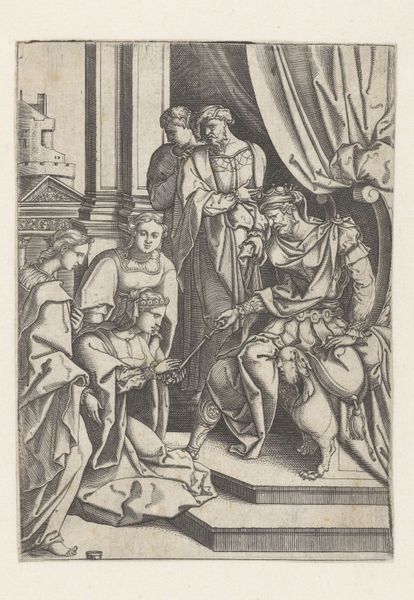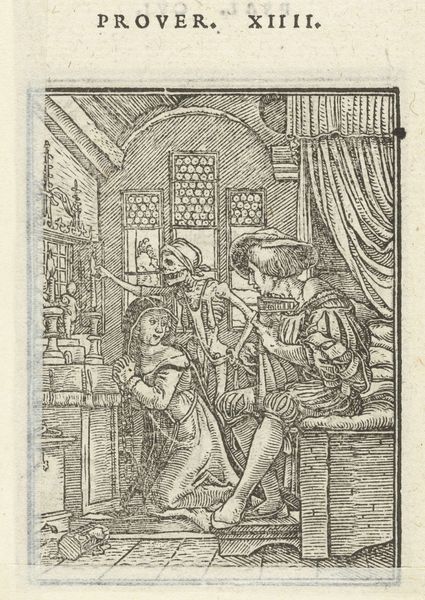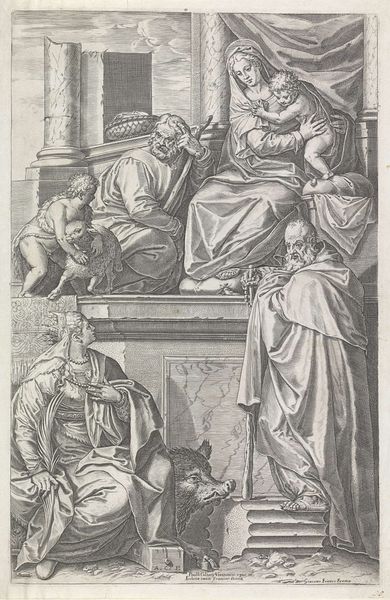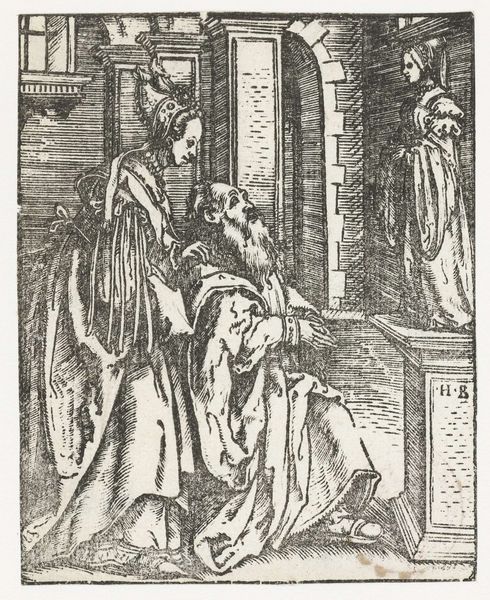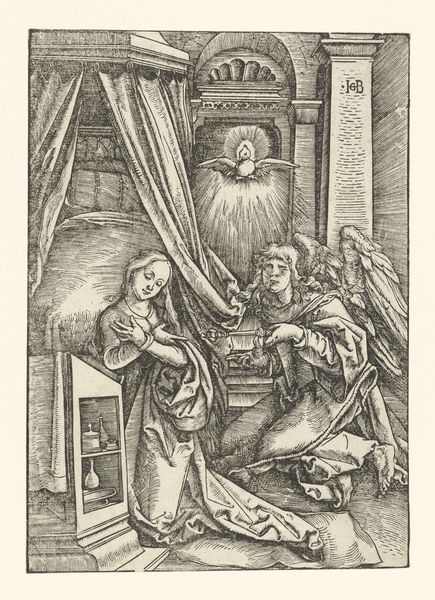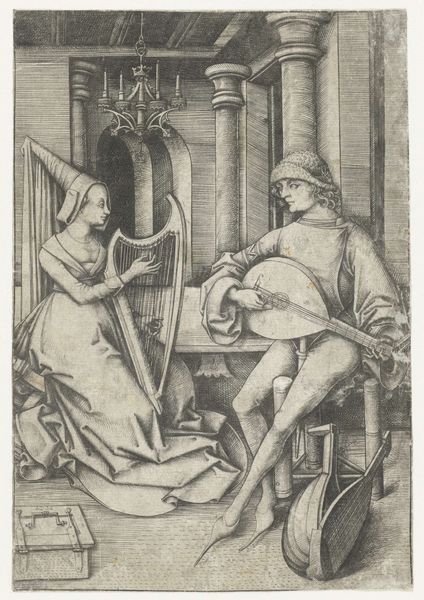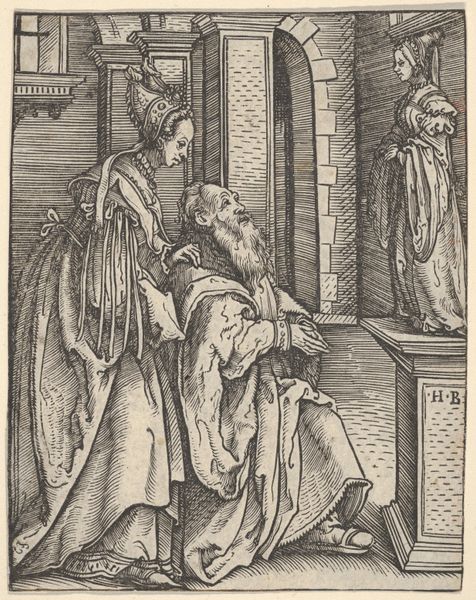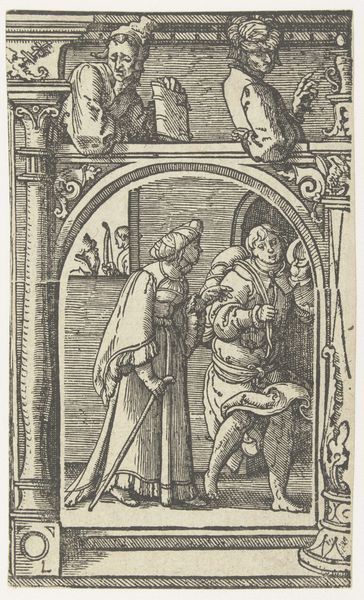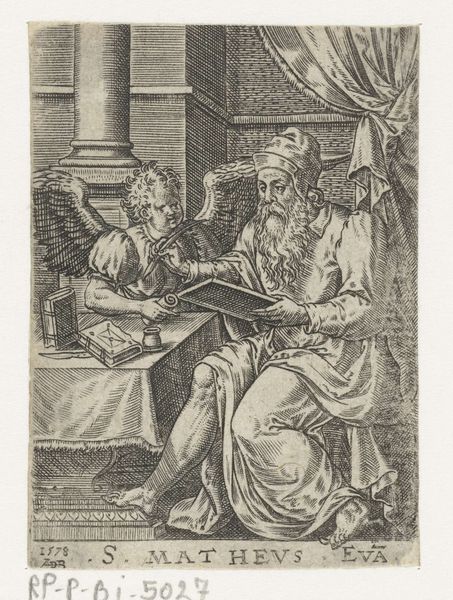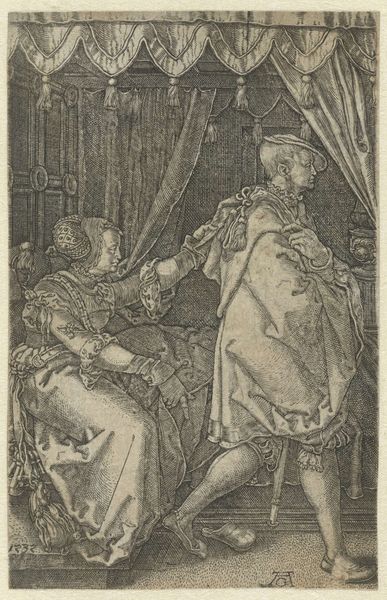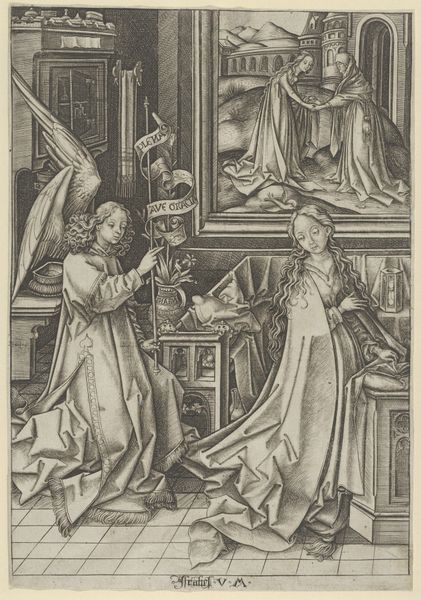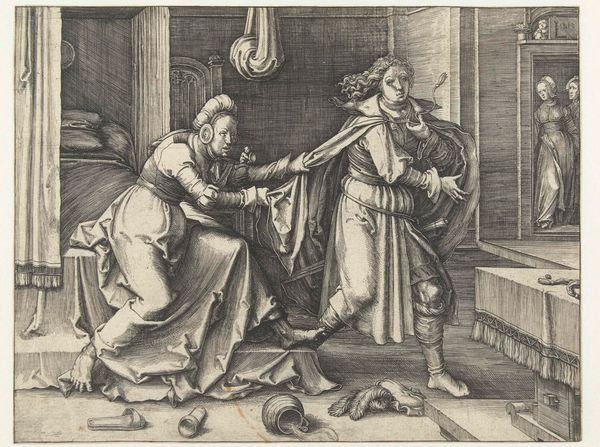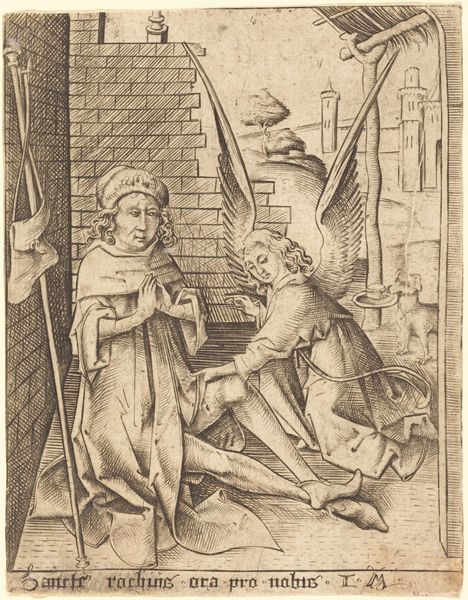
print, engraving
#
portrait
#
medieval
# print
#
caricature
#
figuration
#
line
#
portrait drawing
#
genre-painting
#
northern-renaissance
#
engraving
Dimensions: height 171 mm, width 113 mm
Copyright: Rijks Museum: Open Domain
Curator: This is "Paar gezeten op een hemelbed," which translates to "Couple Seated on a Canopy Bed." Israhel van Meckenem created it sometime between 1475 and 1503. It's an engraving, so it belongs to the world of printmaking. Editor: My immediate response? It's intimate, but deeply unsettling. The details are so sharp, almost clinical, especially considering the bed chamber setting. Curator: Indeed. It's interesting how Meckenem utilizes line. The very precise lines create detailed textures, almost hyper-real, giving an impression that the image represents tangible realities and perhaps societal truths from that period. Notice how the line emphasizes the exaggerated, unflattering features – it feels… intentional. Editor: Absolutely. There is a strong sense of imbalance. Her downward glance is a reflection of the oppressive weight imposed upon women during the late Medieval-Northern Renaissance times; her visible acceptance as part of domestic confinement feels deeply embedded. It really pushes the idea of societal expectation against the realities. Curator: What do you make of his rather assertive placement of the swords, and the scattered shoes? They seem like symbols within a larger narrative. Editor: Those elements! Yes! The swords hint at power, undoubtedly male, casually discarded yet fundamentally present. They could reference violence and readiness; his ownership even within the seemingly 'private' space of their bedroom. Then the shoes – discarded indicators that suggest her acceptance of roles with less physical assertion of agency. She is inside the household, her choices limited. He occupies liminal zones that enable freedom outside and domestic expectations inside the dwelling. It’s starkly class-defined power dynamics playing out symbolically within the domestic setting. Curator: It's all rather intense for what seems at first glance like a simple genre scene. It captures social complexities embedded within ordinary domestic rituals with a unique interplay of detail, form, and compositional clues. Editor: Precisely! This print serves not merely as documentation; its symbolic potency lies in its capability of inciting conversation. It provides vital insights through visual vocabulary regarding societal structures inherent even inside apparently mundane surroundings from late Medieval and early Northern Renaissance society.
Comments
No comments
Be the first to comment and join the conversation on the ultimate creative platform.
